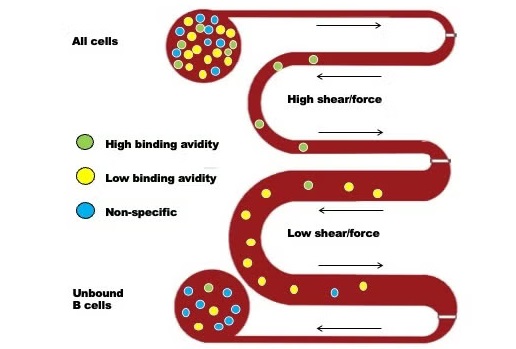New Discovery in Blood Immune Cells Paves Way for Parkinson's Disease Diagnostic Test
Posted on 13 Jan 2025
Parkinson’s disease is the fastest-growing neurological disorder globally and is the second most common after Alzheimer’s disease. Parkinson’s is a neurodegenerative condition, meaning it worsens progressively, and there is currently no cure or drugs that can slow or stop its progression. The diagnosis of Parkinson’s primarily relies on clinical evaluation of motor symptoms, which can result in diagnostic delays or even misdiagnosis. Early detection is critical, as current pharmacological treatments are more effective when administered in the early stages. A new discovery involving blood immune cells has brought researchers closer to identifying a blood biomarker that could help doctors personalize treatments for Parkinson’s disease.
In a collaborative effort, researchers from the WEHI Parkinson’s Disease Research Centre (Victoria, Australia) identified a new connection between blood immune cells and Parkinson’s disease. This research was part of a project that analyzed data from over 500,000 people, marking it as the largest study of its kind. White blood cells play a key role in immune responses and inflammation, and it is known that people with Parkinson’s disease exhibit higher levels of neuroinflammation. The researchers found that changes in the levels of certain blood immune cells could serve as a potential marker for Parkinson’s disease progression, bringing them closer to developing a blood test for diagnosing and monitoring the disease. Mitochondrial dysfunction has long been associated with Parkinson’s, and one potential biomarker for assessing mitochondrial health has been the measurement of the 'mitochondrial DNA copy number' (mtDNA-CN).

However, the new study, published in NPJ Parkinson’s Disease, challenges the previous understanding of the link between mtDNA-CN and Parkinson’s disease, suggesting it may not be due to mitochondrial dysfunction as previously thought. Mitochondria, the energy-producing structures in cells, have their own DNA, which is distinct from nuclear DNA. Each cell contains multiple mitochondria, each with multiple copies of mitochondrial DNA. Some cells, such as those in the heart, require a large number of mitochondria, while others need far fewer. Given the significant role of mitochondrial dysfunction in Parkinson’s disease, it was previously believed that measuring mtDNA-CN in blood samples could serve as a useful biomarker. Since accurately counting the number of mitochondrial DNA copies is nearly impossible, the WEHI team developed a software algorithm to estimate the count from DNA sequencing data obtained from blood samples. They initially tested this method on a dataset of over 10,000 participants.
Their findings revealed that lower levels of mitochondrial DNA in the blood were not directly linked to an increased risk or severity of Parkinson’s disease, contrary to previous assumptions. This apparent connection disappeared when the researchers accounted for the different types of cells in the blood. Instead, they found a stronger association with certain immune cells, specifically neutrophils and lymphocytes, which are types of white blood cells. This suggests that the earlier reported link between mtDNA-CN and Parkinson’s is actually driven by immune responses in the blood, rather than mitochondrial dysfunction. Building on these findings, the researchers replicated their study using data from the UK Biobank, which included nearly 500,000 participants, making it the largest study of mtDNA-CN in Parkinson’s disease to date. This replication confirmed their results and underscored the robustness of their methodology. The researchers have made the specialized software, called mitoCN, available to other research teams worldwide, with the aim of advancing studies beyond Parkinson’s disease.
“The ultimate goal is to be able to screen for Parkinson’s disease in a similar way to the national screening program for bowel cancer, so people can get access to medication sooner,” said Professor Melanie Bahlo, one of the researchers who led the study.
Relatd Links:
WEHI Parkinson’s Disease Research Centre














